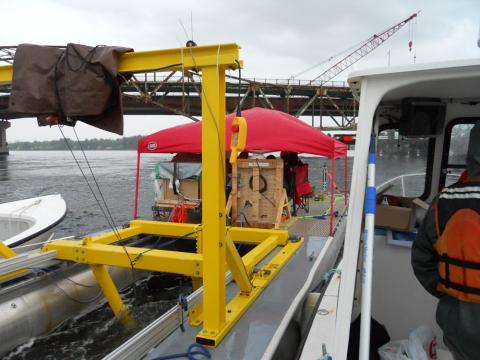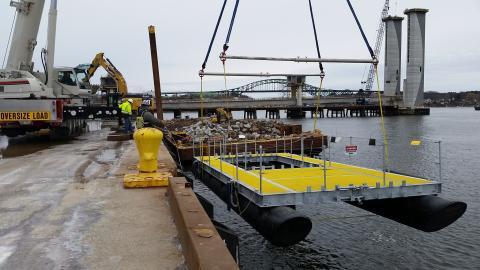Overview
The UNH tidal energy test site is at the General Sullivan Bridge where the Lower Piscataqua enters Little Bay through a constriction. The tidal range is nominally 8.2 ft (2.5 m), and approximately 40 percent of the volume of Great Bay flows under the bridge every tidal cycle. This results in peak current speeds of greater than 4 knots (2 m/s), as well as relatively short periods of slack water and a steep current speed ramp-up. UNH-CORE faculty have modeled the dynamics of this tidal system in several studies. This site is considered a full-scale test site for vertical axis turbines, while it can be considered a “large-scale” test site (geometric scale 1:3-1:5) for large diameter horizontal axis turbines.

The Living Bridge, Portsmouth, NH
This bridge is instrumented with sensors that capture structural performance, traffic patterns, environmental conditions, the behavior of innovative bridge design elements and enable and promote community engagement. The information collected with these sensors is shared with researchers, bridge designers and the bridge owner, but also, where appropriate, with K-12 classrooms and the public. Aesthetic lighting and social media is used to communicate relevant information from the bridge and environmental sensors, such as weather, tides and traffic to the local community. The bridge sensor network, information communication system and aesthetic lighting are powered by a locally available renewable energy resource, tidal energy. The proposed sensing network, including structural response sensors, underwater instrumentation and cameras, and weather stations, will allow for a complete system-based evaluation, including the impact of the tidal turbine. This “smart bridge” provides a platform for continued innovation of sensor, communication and energy technologies. Learn more about the Living Bridge Project
